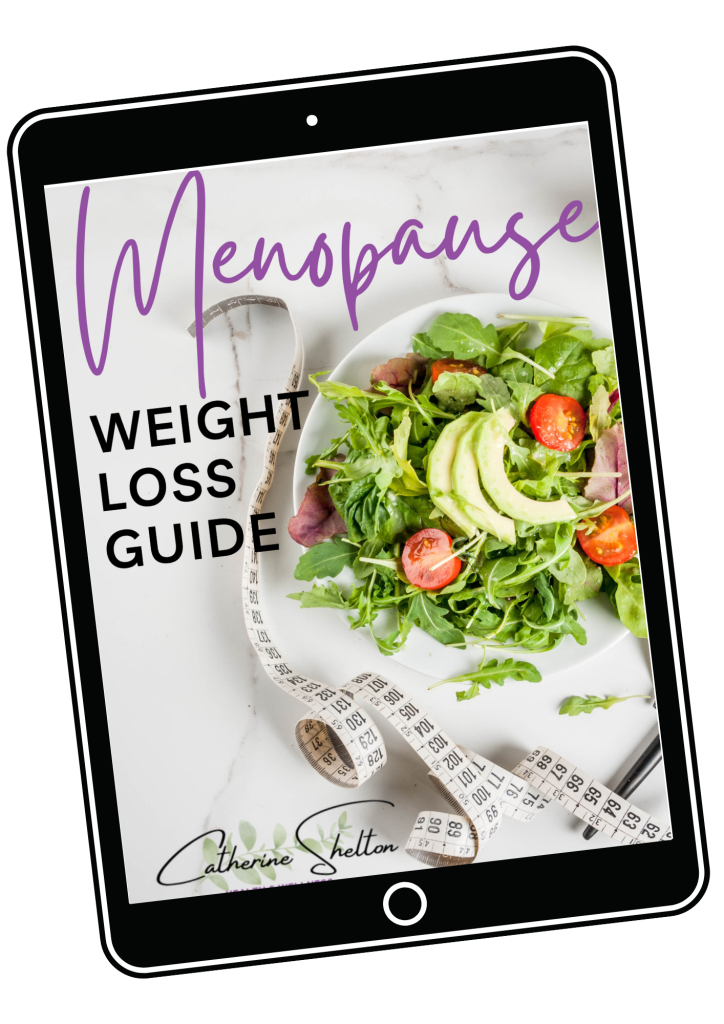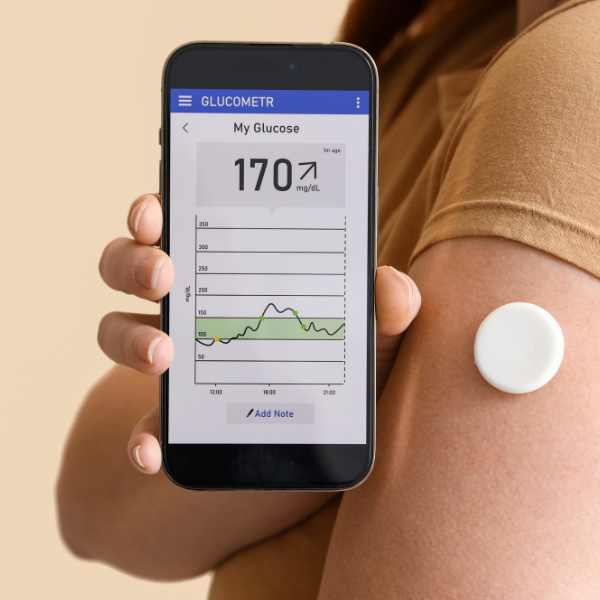Why I Was Wearing A CGM
I’ve been looking forward to this episode because I finally get to share with you my insights from wearing a CGM, or a Continuous Glucose Monitor, for two weeks. A few weeks ago I started a programme with Zoe. If you don’t know about Zoe, it’s a personalised nutrition program run by top scientists, one of whom is Dr. Tim Spector – you may have heard of him. Anyway, they use data from the world’s largest nutrition-science study to give you personalised feedback about your blood sugar response, your blood fat response, and your gut microbiome so that you can identify which foods work best for your body. I don’t get any commission from recommending them on this podcast, but if you’d like to check them out you can head to joinzoe.com
Anyway, I had heard about Zoe from listening to Dr. Spector being interviewed on various podcasts. And I’d also heard a lot about Continuous Blood Glucose monitors and how they give such interesting insights into what food does to your blood sugar response. I couldn’t wait to try it for myself. So, a few weeks ago, I received my Zoe box, attached my CGM to my arm, and got started.
I already had quite a good idea about which foods might spike my blood sugar. But it was still a really fascinating experience, and I did learn some new things, which I’d like to share with you today! Yes, they were my own personal results, but a lot of what I could see happening to me will be the same for so many other perimenopausal women out there. So, I can’t wait to share with you my six insights into steps you can take to keep your own blood sugar levels stable too!
What is a CGM?
CGM stands for Continuous Glucose Monitor. It consists of a small device that usually fixes onto the back of your upper arm. This sensor has a very tiny needle that senses how much glucose is in the fluid under your skin. It then relays this information via Bluetooth to an app that you download onto your phone. Anytime you want to check your blood glucose, or blood sugar, levels, you can just check the app and you’ll see a score as well as a little graph to show you how your glucose levels are fluctuating throughout the day. Here in the UK, we measure blood glucose in mmol/l (millimoles per litre), and in the US it’s usually measured in mg/dL (milligrams per decilitre).
What Is A Normal Blood Glucose Level?
Your blood glucose level will vary throughout the day, from your fasting glucose level first thing when you wake up, to a normal rise up to 2 hours after you’ve eaten a meal. On the Zoe app, I was told that anything between 4.0 and 10.0 mmol/l (that’s 72 mg/dL to 180 mg/dL) was in the green ‘ok’ zone, although 10 mmol/l is actually quite high, and Diabetes UK recommends an upper target of 7.8 mmol/l for a non-diabetic adult, and 8.5 or 9 if you have Type 2 or Type 1 Diabetes respectively. So in mg/dL, a non-diabetic adult should be looking at a post-prandial target (that’s up to 2 hours after a meal) of no more than 140 mg/dL.
Why Is It Important To Manage Our Blood Glucose Levels?
Now, I won’t go into detail here about why it’s important to keep our blood sugar levels stable. You can find out more about that in Episode 53: 4 Simple Steps to Balance Your Blood Sugar, where I talk about why we need to be mindful of our blood sugar, especially as we hit perimenopause, what insulin is, and how insulin resistance can be adding to our menopausal weight gain.
But in a nutshell, if you’re spiking your blood sugar too high during the day then you risk damaging the cells in your blood vessels which can increase your risk of heart attack and stroke. And, over time, constantly high blood sugar spikes can lead to insulin resistance, weight gain, and an increased risk of developing Type 2 diabetes. Besides, unregulated blood sugar can make you feel fatigued and hungry.
What Did I Learn While I Was Wearing My CGM?
Well, firstly, it was fascinating to see what was happening to my blood sugar levels in real-time. I’d obviously read about blood sugar spikes and dips, but now I could actually see it on my phone. Zoe encourages you to eat normally and log your usual meals for the first 3 days and then use the rest of the 2 weeks that the CGM lasts to test out what different foods or different sequences of foods do to your blood sugar. Now, everyone is different and some foods may spike one person’s blood sugar but not someone else’s, so it’s important to learn how your own body reacts to different foods. In fact, it’s an exciting development in nutritional science, and this kind of personalized nutrition is going to be the future of healthcare, definitely.
But having said that, the scientists at Zoe have analysed the data of so many individuals that they’re able to draw some generalized conclusions, which is what I’m going to present to you today. So whilst these things were definitely true for me, they’re probably also going to be true for you.
1. Eat protein with every meal or snack
One of the tests that Zoe gets you to do is to have breakfast one day that is just carbs, so in my case, I chose a bowl of porridge oats made with just water. The next day you have a breakfast that is just protein, in my case I had a handful of almonds. And then finally on the 3rd day, you have those two things together, so the porridge with the almonds.
When I ate just the porridge, there was a definite spike according to the CGM. Not a huge one, because I seem to have good blood sugar control in the mornings, but a spike nonetheless. When I ate just the almonds, there was no spike. And then when I ate the almonds with the porridge, there was also no spike. Which means that the presence of the protein in the almonds was able to slow the release of glucose from the porridge so much so that it barely registered.
So this is tip #1: Always have some kind of protein whenever you have a meal or a snack, ideally with it or just before. It doesn’t have to be almonds, although something like nuts or peanut butter or hummus is really easy to reach for when you’re having some fruit or bread or something that is a carb-heavy snack.
2. Change the order of what you eat on the plate
As we’ve seen, protein helps to dampen down the effects of carbohydrate-rich foods on your blood sugar. Studies show that eating healthy fats, such as avocado and extra virgin olive oil, as well as non-starchy vegetables, such as lettuce, cucumbers and courgettes, can also have a similar effect of lining the stomach, so to speak, so that the sugars are absorbed more slowly. So if you imagine having your plate of food in front of you, eat the salad first, then the protein, then the pasta, bread or potatoes. And never be tempted to have dessert first, or dessert on its own, however nice that may sound!
3. Do some movement after each meal
This is also a test that we were asked to do on the Zoe programme. And it was true – you could see that eating the same food but going for a walk after dinner on one day resulted in a much lower blood sugar spike than eating the same food the day before and going to sit down in front of the TV. Now, it doesn’t have to be a walk – it could be some light weights or exercises, but obviously, nothing too strenuous because you’ve just eaten and don’t want to get indigestion.
4. Reduce simple carbs
Simple carbs are those carbohydrates that tend to release sugar into your bloodstream very rapidly. They tend to be the more refined carbs, so anything made with sugar or flour, such as bread, pasta, crackers, cookies, biscuits, cakes, sweets, bagels, doughnuts, muffins, ice cream, chocolate bars, and so on.
Now, I knew that simple carbs spiked your blood sugar, but I wanted to see for myself. So one day I had a very ‘sugary day’. In the afternoon I let myself have a chocolate chip cookie, followed by pasta for dinner, then ice cream afterwards. And I watched my blood glucose level on my CGM start to rocket up and down like a rollercoaster! I think it actually went up to 9.8 at one point, which was really quite scary!
I ended up grabbing my daughters and marching them off on a walk with me to try to get my blood glucose levels back down again as soon as possible. But what was also interesting was seeing how the spikes were accompanied by extra dips. At one point, it looked like it was going to dip below 4.0, and my sensor sent me a warning that my blood glucose was going too low, and you could almost see the point at which my body started releasing more glucose back into my bloodstream to raise it back up again. Which then of course triggered another spike, and so more insulin had to be released to get it back down again. No wonder it’s so hard to get off the blood sugar rollercoaster once it’s started!
So just be aware of what these simple, quick-releasing carbs can do. It’s not to say you can never have cake or ice cream or white pasta, but it’s best to do so in moderation and with some healthy fats, protein, and vegetables at the same time or just before.
5. Be mindful of your blood sugar later in the day
So, I think this was the biggest takeaway for me personally. I could see from my CGM that it was so much more difficult for me to manage my blood sugar later in the day than it was up to, say, 2pm. I could actually see this, by noticing the differences between eating the same meal at dinner time and then eating the exact same meal the next day for lunch.
And this seems to be generally true for many women in their 40s and beyond: we do tend to be more insulin resistant later in the day. So, certainly for me, I’m going try to avoid large amounts of carbohydrates or sugary foods for my evening meal, and if I want to eat that slice of birthday cake then I know that the best time is mid-morning or lunch. And also, if I can start to build in a habit of a short walk after dinner, then I know that’s going to be really beneficial too.
6. Allow more time in between snacks and meals
Remember that big sugary day? Well, one of the problems in the evening with all those blood sugar spikes was that there wasn’t enough time in between me eating the cookie and then the pasta and then the ice cream for my blood sugar levels to get down to normal, which meant that both the pasta and the ice cream spikes on my CGM app were progressively higher and much higher than they needed to be (hence my very panicky walk with my daughters after dinner!).
Now, we might have heard that it’s good to graze all day to keep your blood sugar levels stable, but that’s really not true for most women. Our bodies need time to digest the food and reset before the next lot of food comes in, not just for avoiding blood sugar spikes but also to give the body time to focus on other things it needs to do, like cell repair and detoxification. Having said that, if you are a grazer, then you might want to cut back on the snacks gradually to let your body get used to it and to be able to tune into your hunger cues better. In fact, you’ve probably forgotten what it feels like to actually feel hungry, so do it gradually, otherwise you might be tempted to grab for high carb, high sugar foods when the going gets rough.
What About Fasting?
But the flip side of that is to also be aware of what might happen if you actually skip a meal. Now, the pros and cons of fasting is a whole other topic, and one that I might have liked to explore if I’d had more time with my CGM. But it was interesting to notice what happened on the one day when I did a fast over lunch – so that was going from just a small breakfast in the morning right the way through to dinner in the evening without any snacks.
As expected, the small breakfast, which was protein-rich, had no noticeable spike. My blood sugar kept dropping very gradually throughout the day, so that it was around 4.0 by dinnertime. But then, when I had dinner, which I don’t think was an unusually large amount or a particularly carb-heavy dinner, my blood sugar shot straight up.
Now, like I said, I don’t really know what to make of that. And this is just my own personal experience. But it has made me wonder that perhaps it might be better for me to break my fast with breakfast the next morning rather than with an evening meal. Or to do a more time-restricted eating approach, where I focus my meals into a shorter window of time in the middle of the day and stop eating, say, around 4 or 5pm. Anyway, that’s something that you might like to explore for yourself if you’re interested in fasting or time-restricted eating.
Summary
Just to recap, the six useful things I learned from wearing a CGM were:
- Eat protein with every meal or snack
- Change the order of what you eat on the plate
- Do some movement after each meal
- Reduce simple carbs
- Be mindful of your blood sugar later in the day
- Allow more time in between snacks and meals
I hope you’ve found those tips helpful. Message me at hello@catherineshelton.com and let me know which of those 6 tips you might like to try for yourself. Or perhaps you’ve also had an experience of wearing a CGM? I’d love to hear what you found out about your blood sugar responses and whether they were similar to mine!
And don’t forget, if you’d like some coaching, accountability and support to help you manage your blood sugar levels so that you finally start to lose weight and look after your body better, then book your free discovery call with me at bit.ly/callcatherine. Yes, that’s right, do it now. Honestly, what have you got to lose? Other than the weight of course! Seriously, I’d love to hear from you.
Episode Show Notes
Grab your FREE Menopause Weight Loss Guide.
Interested in getting some private, one-on-one health coaching? Jump on a free Discovery Call to find out more, no strings attached.
Come and hang out with me on Facebook and Instagram
Join our Healthier Life Through Menopause Community Facebook Group and get daily tips, recipes, challenges, encouragement and more!
Want to find out more about my health coaching programmes? Head over here.
If you’d like to give my feedback and suggestions for future episodes, I’d love to hear from you. Email me at hello@catherineshelton.com
If you’re generally not feeling your best and would like to make some changes, there are a lot of simple steps you can take by modifying your diet and lifestyle which can have a hugely beneficial effect on your overall health and energy levels, as well as help ease your symptoms. If you’re interested to find out more, jump on a free, 30-minute discovery call with me, I’d love to hear from you.
Disclaimer: This information is for educational purposes only and does not replace advice given by your primary care provider. Please see your doctor if you’re considering making substantial changes to your diet and lifestyle.

GRAB YOUR FREE MENOPAUSE WEIGHT LOSS GUIDE!
Are you finding the pounds are gradually creeping on? Are you frustrated because the usual trick of ‘eat less, move more’ just isn’t working anymore?
In this guide, I explain why women often gain weight in perimenopause, and I give you 3 simple tips so you can start to turn that around right away!









Leave a Comment